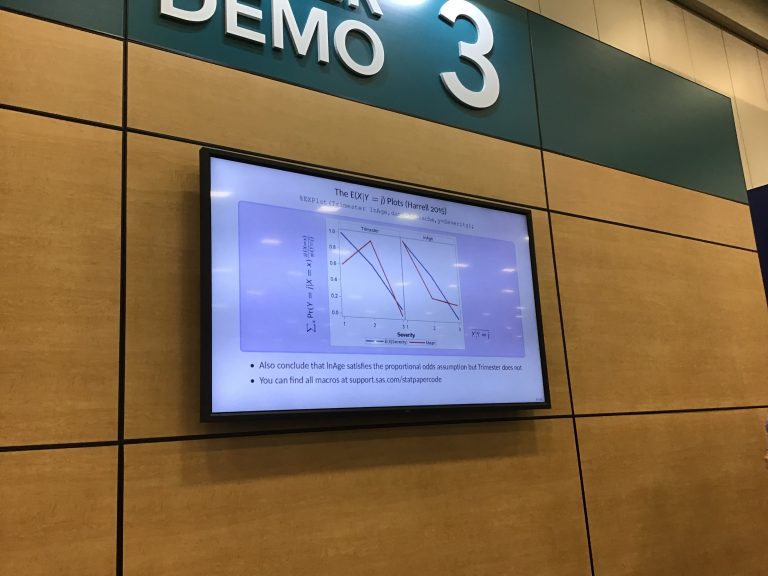Doing your statistics homework with SAS – confidence intervals
Computing confidence intervals is one of the areas where beginning statistics students have the most trouble. It is not as difficult if you break it down into steps, and if you use SAS or other statistical software.
Here are the steps:
1. Compute the statistic of interest– that is mean, proportion, difference between means
2. Compute the standard error of the statistic
3. Obtain critical value. Do you have 30 or more in your sample and are you interested in the 95% confidence interval?
- If yes, multiply standard error by 1.96
- If no (fewer people), look up t-value for your sample size for .95
- If no (different alpha level) look up z-value for your alpha level
- If no (different alpha level AND less than 30) look up the t-value for your alpha level.
4. Multiply the critical value you obtained in step #3 by the standard error you obtained in #2
5. Subtract the result you obtained in step #4 from the statistic you obtained in #1 . That is your lower confidence limit.
6. Add the result you obtained in step #4 to the statistic you obtained in #1. That is your upper confidence limit.
Simplifying it with SAS
Here is a homework problem:
The following data are collected as part of a study of coffee consumption among undergraduate students. The following reflect cups per day consumed:
3 4 6 8 2 1 0 2
A. Compute the sample mean.
B. Compute the sample standard deviation.
C. Construct a 95% confidence interval
I did this in SAS as so
data coffee ;
input cups ;
datalines ;
3
4
6
8
2
1
0
2
;
proc means mean std stderr;
var cups ;
I get the follow results.
| Analysis Variable : cups | ||
|---|---|---|
| Mean | Std Dev | Std Error |
| 3.2500000 | 2.6592158 | 0.9401748 |
These results give me A and B. Now, all I need to do to compute C is find the correct critical value. I look it up and find that it is 2.365
3.25 – 2.365 * .94 = 1.03
3.25 + 2.365 * .94 = 5.47
That is my confidence interval (1.03, 5.47)
=========================
If you want to verify it, or just don’t want to do any computations at all, you can do this
Proc means clm mean stddev ;
var cups ;
You will end up with the same confidence intervals.
Prediction: At least one person who reads this won’t believe me, will run the analysis and be surprised when I am right.
